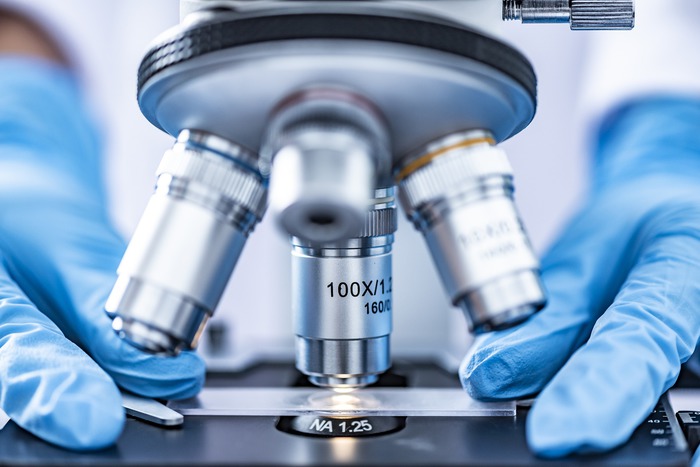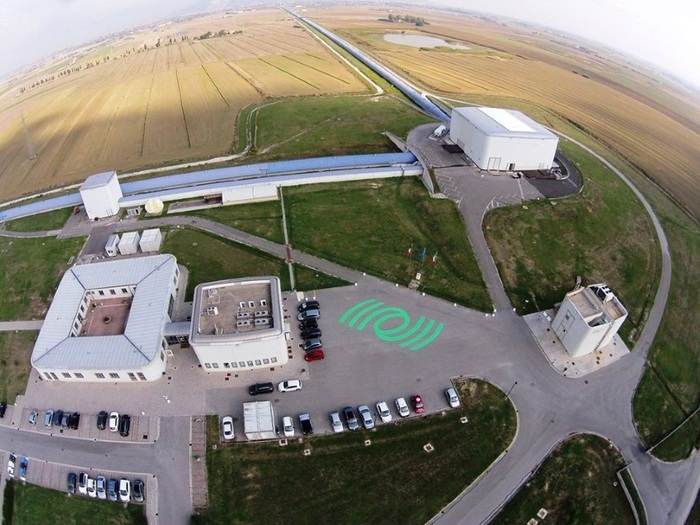Enlarge image
Black Hole Fusion (Artist's impression)
Photo: SXS / Caltech
When scientists announced at a major press conference in Washington in 2016 that they had measured gravitational waves for the first time in human history, it was a sensation in many ways.
First and foremost, a mega-project in physics was finally crowned with success after many decades of research and expensive development.
Kilometers of gigantic laser interferometers were built for this project, and in the end there was the Nobel Prize. The measurements from September 2015 confirmed a prediction by Albert Einstein. More than a hundred years ago he predicted the tremor of space-time - it occurs when large masses are accelerated. So the genius was right again. Because on Earth, the researchers were able to measure the tremors with their highly sensitive laser instruments; it came from two black holes that had merged.
But the discovery sparked the imagination of physicists for another reason as well.
Because with the gravitational waves they had not only been able to prove the traces of an impressive event in space, they also had a new type of measuring instrument in their hands that allowed them a special view of the universe.
When it was discovered, some raved about the beginning of a new era in astrophysics.
Because just as you can look through a telescope in order to follow what the electromagnetic radiation, which also includes light, reveals to you in space, so you can also track cosmic objects with gravitational waves.
So it was expected that gravitational wave research would pick up speed in the future.
At some point, measurements might become routine.
Now this impression seems to be confirmed more and more. Because the researchers at the “Ligo” and “Virgo” detectors in the USA and Italy have measured a record number of gravitational waves. In a previously published article, they report on 35 new discoveries. This lets the number of gravitational wave detections soar to a total of 90.
A tsunami of gravitational waves was measured, according to co-author Susan Scott, an astrophysicist at the Australian National University in Canberra and a member of the Ligo team. "These measurements increase the gravitational waves discovered by Ligo and Virgo by a factor of ten," said Scott, according to a statement. You will help solve some of the most complex puzzles in the universe, such as the composition of matter and how space and time work.
The data was collected between November 2019 and March 2020. Again, most of the discoveries testify to the fusion of black holes, 32 of these signals come from this cosmic event. The masses of the two giants attract each other, orbit each other in ever narrower orbits and finally merge with one another to form an even more massive black hole. The observations showed a surprising variety of these massive objects that are formed when a large star runs out of fuel at the end of its life and collapses. In the observations, one double of black holes was 145 times the mass of the Sun, while another was only 18 times the mass of our star.
The other three intercepted signals are a little more mysterious.
Two are believed to have come from the merging of a black hole with a neutron star, a less dense object that did not deliver as strong signals, but which had also been measured before.
Neutron stars are also remnants of massive stars.
Although they were relatively small and had a radius of only about 15 kilometers, they reached 1.4 times the solar mass, it was said.
The researchers attribute the increase in observations to improvements in the detectors.
In the future it should be possible to pick up even weaker signals from less massive objects and thus also to receive indications of new sources.
Refine detectors further
The researchers hope to find further answers to their questions. It is still unclear how systems were created from two black holes, whether it is, for example, a binary star system - i.e. two stars that went through their life cycle together and finally became black holes? Or whether the two objects did not meet until later and were pushed together in their surroundings, for example in the center of a galaxy?
The gravitational wave detectors will continue to serve science well.
The Ligo consists of two observatories, located in Hanford (Washington) and Livingston (Louisiana).
The European gravitational wave detector Virgo is located near Pisa in Italy.
The facilities work with two laser beams that are arranged in an L-shape over kilometer-long tunnels.
When a gravitational wave reaches Earth, the laser in one arm of the detector compresses and the other expands.
But the extent of the change is tiny, mostly a few thousandths of a proton or neutron.
That's why the detectors have to be incredibly sensitive.
joe






